
Hydroponic Nutrients
Fertilizer vs. Hydroponic Nutrients
In order to begin a discussion on hydroponic nutrients, it’s important to first distinguish the difference between the terms fertilizer and hydroponic nutrient.
Fertilizer is intended to feed the microorganisms in the soil, such as beneficial bacteria and fungi. All of the living components in the soil must be protected, so fertilizer is lower in concentration compared to hydroponic nutrients. The microorganisms break down the fertilizer into a form that is usable by plant roots.
A hydroponic system is a sterile environment and there is no soil- therefore there aren’t any microorganisms for the plant roots to depend on. Hydroponic nutrients are directly absorbed by plant roots, which eliminates the middle step of those soil organisms. Hydroponic nutrients are higher in concentration because there are no organisms that need to be protected in these systems.
One last difference is the fertilizer and hydroponic nutrients are measured on two different scales: TDS and EC. We recommend only using EC, for the reason why read our article EC vs TDS
EC
Electrical Conductivity, or EC, is a measurement of the ionic activity of a solution. EC is measured using a probe that sends an electrical current into the water. EC is measured in microSeimens, or uS, and miliSeimens or mS. Hydroponic nutrient solutions should always be measured in EC.
When measuring your nutrient solution, it is important to first determine the EC of the water you are using. If you choose EzGro’s Vegetable Formula, for example, the recommended EC is 1575 uS. If you are using tap water and its EC is 100 uS, then the total EC of your solution should be 1675 uS.
Types of Water in a Hydroponic System
There are many types of water to choose from when sourcing water for your hydroponic system. Some are better than others, and now is the time to determine the differences. Rainwater is nature’s reverse osmosis (RO) water, and is the best choice for a hydroponic system. Believe it or not, well water tends to be the worst choice when choosing a source for your hydroponic system. Well water has been sitting in the ground, which means that anything in the ground can leach into the water and contaminate it. Our article Types of Water in a Hydroponic System has more information on this subject.
EzGro 3-Part Mixes: What are parts A, B, and C?
Our nutrient mixes are divided into three parts, A, B, and C. We do this to give you the most control over your nutrient solution, which results in healthier, more productive plants.
Part A combines all the minerals that are compatible with each other.
Part B is calcium nitrate or Ca(NO3)2, and cannot be mixed with Part A or Part C. If Part B is mixed with either of these two parts, a reaction occurs that solidifies it like a block of cement. The molecules bond, rendering it completely useless to your plants.
Part C is magnesium sulfate or MgSO4, also known as Epsom salt. No chemical reaction would occur if this was mixed with part A, but we like to keep these three parts separate because we want to give you the power to tweak your solution as you need to.
Parts B and C are crucial to plants when they are in the fruiting stage. Parts B and C should be increased when plants are fruiting so that you get the most out of your plants, and the nutrient mix.
In addition to the 3-part system, EzGro offers two different blends to give you exactly what you need. Our nutrient mixes use only the highest quality ingredients. We pride ourselves on higher quality- it’s what we expect in a product, and it’s what we trust for growing our own plants.
We have a Vegetable Formula that can be used with almost every plant. We also carry a Strawberry Formula that is lower in concentration so it’s meant specifically for strawberries. Strawberries are sensitive to high nutrient levels, so choosing the formula specific for them will save you money and provide the optimum low-level nutrients that your strawberry plants crave.
How to Mix: Powder to Liquid Concentrate to Working Solution
There are three steps in mixing nutrients for your system, and we’ve already completed the first for you by making the A mix which is a combination of necessary minerals for the plant.
- Powdered Concentrate: We’ve divided the nutrients into 3 parts so that you can add more or less of each, depending on your needs. This is a powder so it’s measured by weight, not by volume. When measuring the powder, be sure to use a scale and not a measuring cup.
- Liquid Concentrate: The next step is to combine each part with water, separately. One-gallon jugs are easy to find, inexpensive, and easy to store, so this is what we recommend using. As long as the container for the liquid concentrate is sealed when it is stored, it will have an indefinite shelf life. This is a concentrated version of your nutrient solution that is measured by volume using a measuring cup.
- Working Solution: The working solution is the nutrient solution in your reservoir. It is at the ideal concentration for your plant’s roots to uptake the nutrients. Reminder: always factor in the EC of your water! See the section on EC for more information about this. For information on mixing your liquid concentrate into a working solution, read on.
Example 1: When mixing nutrients for the Patio Garden, which has a 5-gallon reservoir, add 4 gallons of water into a 5-gallon bucket and add 1.28 oz. of each liquid concentrate per gallon of water.
1.28 oz. of each part x 4 gallons of water = 5.12 oz. of each part
5.12 oz. x 3 Parts (A, B, and C) = 15.36 oz. nutrients
15.36 oz. nutrients + 64 oz. water = 79.36 oz., or 4.96 gallons, of working solution
Example 2: When you’re using a 55-gallon barrel as a reservoir, fill it with 50 gallons of water and add ½ gal of each Part, which will give you 51.5 gallons of nutrient solution for your plants.
50 gallons water + 1.5 gallons nutrients (from all 3 Parts) = 51.5 gallons working solution
Closed System Flushing
Finally, let’s examine how important it is to flush out your nutrient reservoir, if you are using a closed system. Closed systems should ideally be flushed out each week. Though this may seem like a lot, there is a scientific explanation for it. Plants intake nutrients through their roots, just as we consume food through our mouths. Plants excrete waste salts in a process known as transpiration. These salts are excreted into the water that is part of your nutrient solution. The EC will rise when there are lots of waste salts in the water, but it is actually measuring the waste and not the fresh nutrients. Although the reading is accurate, the plants cannot use these salts.
This may sound like a lot of maintenance, but once you develop a routine it will be very quick and straightforward. After filling the Patio Garden’s reservoir, just wait until the solution level drops down to the bottom. This will happen in about a week. At this point, just refill with fresh water, add nutrients, and you’re ready to go. The Backyard Garden has two tanks side-by-side. Run one tank down to the bottom, and then refill from the second tank. This method makes sure most of the nutrients are used up before ever adding more.
Once per month after the nutrient reservoir has been nearly run dry, add fresh water and run through the system. This water should be pumped out into a garden bed to clean your system, and fertilize your soil garden. This solution has a low concentration, which makes the perfect fertilizer for plants grown in soil!
One myth about hydroponics is that it is wasteful because the reservoir needs to be emptied constantly. When you use this method, plants use all of the nutrients, whether they are in a hydroponic system or in your soil garden, and none of them are released as runoff.

EC vs TDS

Organic Does Not Mean “No Pesticides”

How Plants Uptake Nutrients

What is Aquaponics

What is Aquaculture
Trackbacks and pingbacks
No trackback or pingback available for this article.
2 comments
Leave a reply Delete Message
Articles
Featured
-
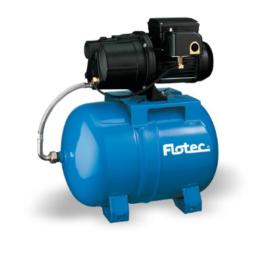 Rainwater Pressure Tank SystemRegular Price $449.00
Rainwater Pressure Tank SystemRegular Price $449.00 -
 Drain Dish & Diffuser Dish Set 10 PackRegular Price $124.99
Drain Dish & Diffuser Dish Set 10 PackRegular Price $124.99 -
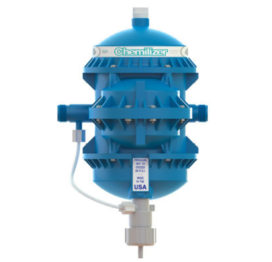 Chemilizer InjectorRegular Price $349.99
Chemilizer InjectorRegular Price $349.99 -
 EzGro Precision Micro TrimmerRegular Price $11.99
EzGro Precision Micro TrimmerRegular Price $11.99 -
 EzGro Quad Pot 50 PackRegular Price $499.90
EzGro Quad Pot 50 PackRegular Price $499.90 -
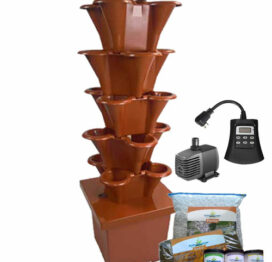 EzGro Patio GardenRegular Price $389.99 – $399.99
EzGro Patio GardenRegular Price $389.99 – $399.99 -
 Drain Dish & Diffuser Dish SetRegular Price $16.99
Drain Dish & Diffuser Dish SetRegular Price $16.99 -
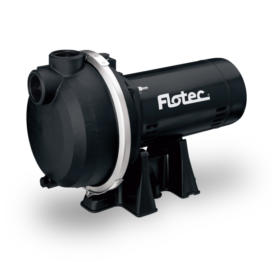 Thermoplastic Irrigation Pump 1 HPRegular Price $469.99
Thermoplastic Irrigation Pump 1 HPRegular Price $469.99 -
 Five Tower Deck GardenRegular Price $2,499.00
Five Tower Deck GardenRegular Price $2,499.00 -
 5000 Watt 48 Volt Power InverterRegular Price $899.00
5000 Watt 48 Volt Power InverterRegular Price $899.00





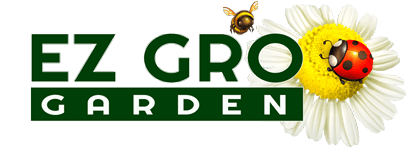


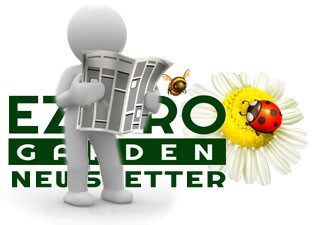
How much do it cost to maintain the nutrients each month. Say i had a set up like in the below.
https://m.youtube.com/watch?v=QSnHShly5R0&list=PLfLCtTF9NzFKjQPr3ZevMVSyQN-9J18K6&index=11&t=8s
The garden is a 50 tower garden which will use about 50 gallons a day with adult plants. A 5 gallon pail set of the nutrients will last about 6 months in this system.